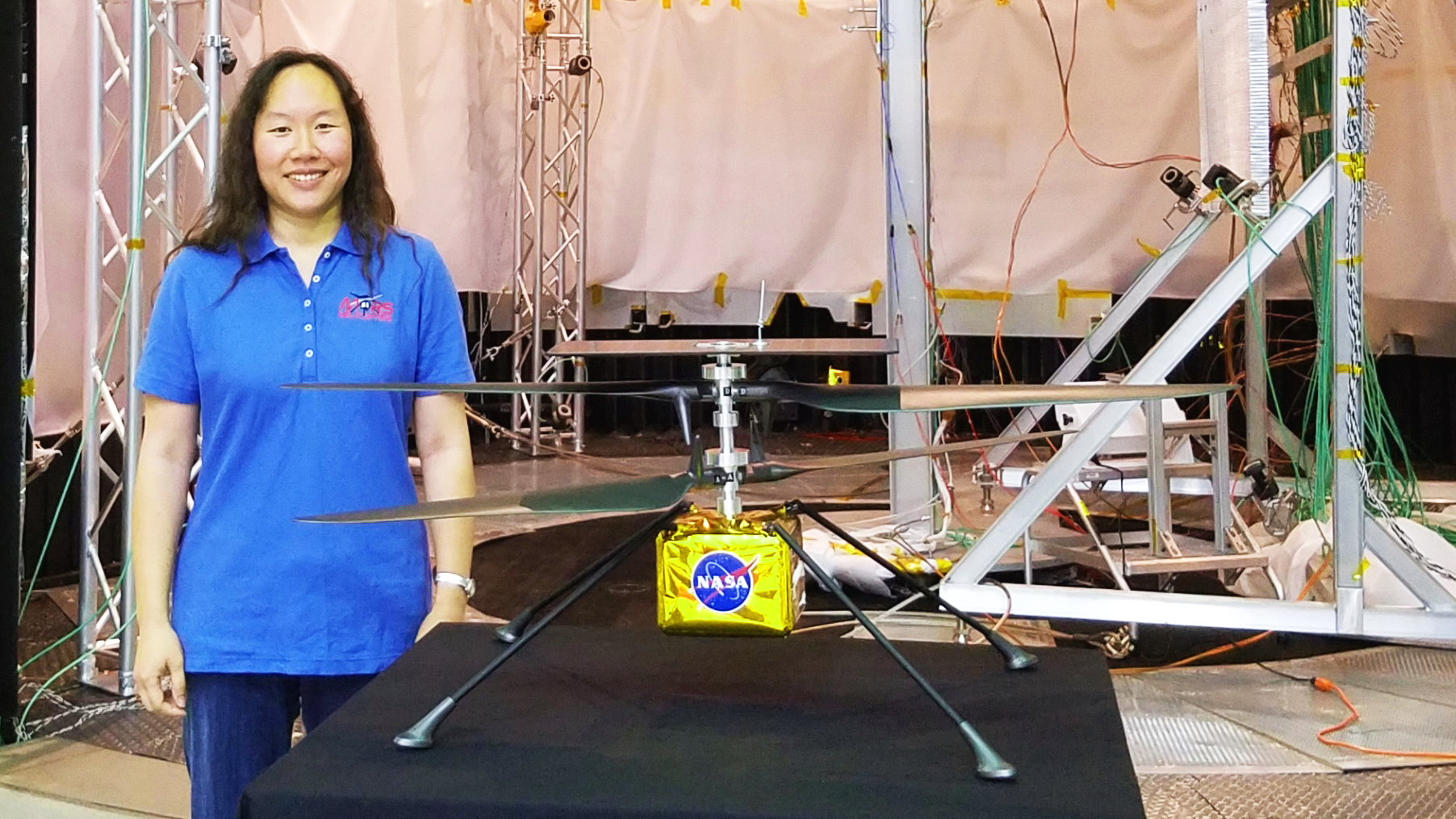Alumna Amiee Quon, test chamber engineer for NASA's Mars Helicopter, shares her story of achieving big goals and inspiring others to do the same.

In July 1997 Amiee Quon saw NASA’s Sojourner Mars Rover on the cover of Time Magazine and had a passing thought: Wouldn’t it be cool to work on that? Fast forward to April 2021, and the Mars Helicopter Ingenuity made its first successful flight on Mars…with Amiee Quon serving as the mission’s chamber test engineer.
Growing up in Houston near the Johnson Space Center, Quon (M.S. ME 2007) always had an interest in space, but wasn’t sure exactly how she wanted to be involved. While earning her master’s at UT Austin, she fortuitously met with an on-campus recruiter from NASA’s Jet Propulsion Laboratory (JPL), securing a job working for the group that had inspired her all those years ago. Upon her graduation, she began her work at JPL with the Mars Science Laboratory on the Mars Curiosity Rover.
In 2014, the engineers at JPL were purposed with a simple question: Can you achieve enough lift to fly on Mars? With the atmosphere on Mars being so thin compared to Earth’s atmosphere, it becomes very difficult to achieve liftoff. To prove that it was possible, the Mars Helicopter, named Ingenuity, was born. And, after nearly seven years of impressive work, Quon was asked to join the Mars Helicopter project.
Working with small scale models in the JPL space simulator, the team began testing variables, including rotor size, mass and how the helicopter would be controlled. The engineers also had to take into consideration the considerable distance from Earth to Mars, which creates a 10- to 15-minute communication lag between the helicopter and its controller.
After years of calculating and testing and a successful voyage to Mars, Ingenuity, weighing in at just four pounds, was ready to make its first flight on April 11, 2021 with the whole world watching. Unfortunately, a software quirk delayed the flight by over a week.
“We’ve done all this testing but you never know, you test as well as you can, but there are some things that you just can’t simulate,” explained Quon. “You actually have to be there where the rubber meets the road and see how it goes. And so, this turned out to be one of those outside issues that we hadn’t seen before in our testing.”
With a software patch in place, Ingenuity was able to take flight on April 19, 2021 and has now completed seven successful flights of varying complexity. As a technology demonstration, the helicopter has achieved what it originally set out to do. But, it may not be at the end of its journey.
“After the first few flights, NASA was very happy with how we’d done and they wanted to transition us to what they call an operational demonstration. So, they’ve given us a few more months to test out the capability of the helicopter actually acting as a scout for the rover,” Quon said. “The helicopter will act as a ‘bird’s eye view,’ so you can see further ahead of the rover and check things out.”
Seeing the original project coming to an end after so many years is a little bittersweet for Quon. “One thing you really miss is the people – that group that you’ve spent all this time with and all the late nights and weekends where you’ve bonded. And, it’s really great to see the helicopter flying, that was super exciting.”
Quon also hopes that the public nature of her work will inspire other young people, especially girls, to become involved in STEM. She explains, “I’m glad that I can show people that there are women who do this kind of work. I think it helps to be able to see people, to be able to picture yourself in that position. And if this is something that you’re interested in, being a female is not something that should hold you back. There’s no reason that you can’t do anything that anybody else can do.”
Getting others involved in engineering is a passion for Quon. She is heavily involved in the NASA Community College Aerospace Scholars program, a program that allows students to work and interact with NASA engineers while encouraging them to finish their degrees and pursue a NASA-related career. It’s important for her to help them realize that a career in STEM is something they can attain regardless of their educational background.
So, what’s next for Quon? A trip to Mars when it becomes available? Probably not. Quon admits she’s not a big fan of travelling and the roughly six-month, one-way journey is a big deterrent. As for her work back on Earth, she is currently getting up to speed on her newest project, a collaboration between NASA and the Indian Space Research Organisation.
At the end of the day, Quon hopes that seeing the helicopter will encourage people to go into engineering, even if they don’t get involved in space. “Like the Sojourner made me say, ‘Oh wow, I want to work on that,’ maybe some kids now will go on to work on the next air vehicle on another planet, or they will discover an entirely new field of engineering that interests them. There are lots of ways that engineering helps this world.”






